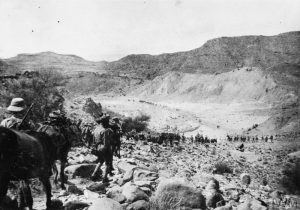Many countries that appear on modern maps are relatively recent creations. Some peoples hold to the belief that no one owns land. We are all transient tenants. They have a point.
Belgium was created in 1830. The map of Africa was mainly drawn in the 19th century. Much of the Middle East had lines drawn after the First World War. The Balkan states came into existence as the former Yugoslavia fragmented following the death of Tito in 1980. India was united under British rule. Prior to that, there were many princes and local dignitaries. The British governed over the vast land using the previous rulers as their agents. In the main, this system worked well, at least for the British. The main area where things were less satisfactory was in the North West Frontier. Today this represents the north west part of Pakistan (itself the creation of a man with a map and a coloured pen) as it borders Afghanistan. This region remains a trouble spot today, just as it has for hundreds of years. It is, definitely by the standards of someone from Roscommon, mountainous and inhospitable. The peaks reach over 20,000 feet (7,000 metres). The Khyber Pass represents one of the few ways through the mountains. As such it has been used by invading armies. The British Army regarded defence of this route as the main priority for the troops based in India. Internal security was of secondary importance.

(This photo was taken approximately ten years after Patrick left India. The mountains will not have changed!)
Whilst the headquarters of the 1st Battalion of the Manchester Regiment were located in Secunderabad, detachments were sent regularly to guard the frontier. Up in the mountains, the heat and humidity were more bearable than down on the plains. The downside, as alluded to in “Jewel in the Crown” was that some of the natives were very unfriendly.
A story that was passed down to me concerns a time when Patrick was serving in the frontier region. He was on sentry duty one night when he thought that he saw movement outside the camp. He issued a challenge. Nothing happened. When he looked again, one of the ‘rocks’ had moved. So he shot at it. Apparently this action was not well received by his officers. In all probability, his fellow soldiers took a different view. This would have been the first time in his army career when Patrick would have been in real danger. Casualties from hostile action were slight, but finite. Disease still represented a more significant threat to his wellbeing. For service on the North West Frontier, I believe that Patrick would have been entitled to the Indian General Service Medal. (Medal ribbon shown below)
